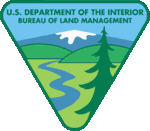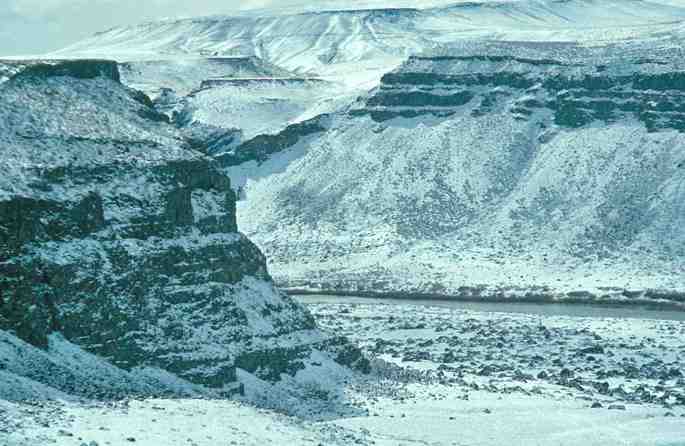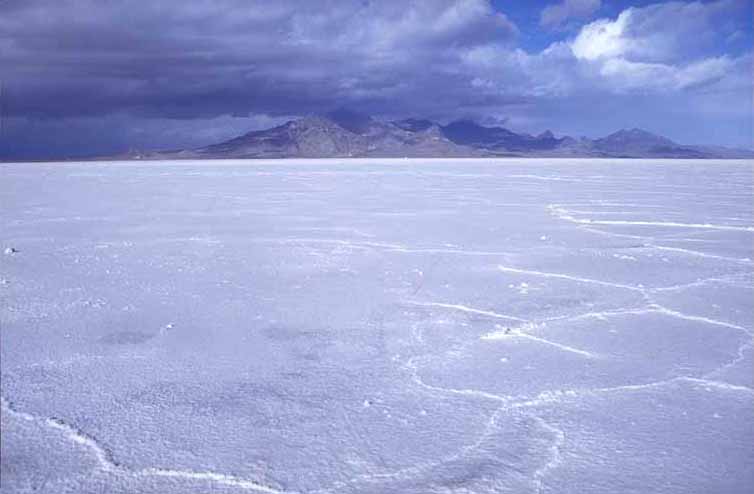|
US BUREAU OF LAND MANAGEMENT
|
||
|
HOME | INDEX | AUTOMOTIVE | BLUEBIRD | ELECTRIC CARS | E. CYCLES | SOLAR CARS |
||
|
The Bureau of Land Management (BLM) is an agency within the United States Department of the Interior which administers America's public lands, totaling approximately 261 million acres (1,060,000 km²) or one-eighth of the landmass of the country. Most public lands are located in western states. With approximately 9,000 permanent employees, and over 1,000 more temporary, this works out to over 26,000 acres (105 km²) per employee. BLM figures for total land under their management range as high as 264 million acres (1,070,000 km²).
Mission
The Bureau of Land Management states that it is their mission to sustain the health, diversity and productivity of the public lands for the use and enjoyment of present and future generations.
History
The BLM's roots go back to the Land Ordinance of 1785 and the Northwest Ordinance of 1787. These laws provided for the survey and settlement of the lands that the original 13 colonies ceded to the Federal government after the War of Independence. As additional lands were acquired by the United States from Spain, France, and other countries, Congress directed that they be explored, surveyed, and made available for settlement. In 1812, Congress established the General Land Office in the Department of the Treasury to oversee the disposition of these Federal lands. As the nineteenth century progressed and the Nation's land base expanded further west, Congress encouraged the settlement of the land by enacting a wide variety of laws, including the Homesteading Laws and the Mining Law of 1872.
These statutes served one of the major policy goals of the young country—settlement of the Western territories. With the exception of the Mining Law of 1872 and the Desert Land Act of 1877 (which was amended), all have since been repealed or superseded by other statutes.
The late nineteenth century marked a shift in Federal land management priorities with the creation of the first national parks, forests, and wildlife refuges. By withdrawing these lands from settlement, Congress signaled a shift in the policy goals served by the public lands. Instead of using them to promote settlement, Congress recognized that they should be held in public ownership because of their other resource values.
In the early twentieth century, Congress took additional steps toward recognizing the value of the assets on public lands and directed the Executive Branch to manage activities on the remaining public lands. The Mineral Leasing Act of 1920 allowed leasing, exploration, and production of selected commodities such as coal, oil, gas, and sodium to take place on public lands. The Taylor Grazing Act of 1934 established the U.S. Grazing Service to manage the public rangelands. And the Oregon and California (O&C) Act of August 28, 1937, required sustained yield management of the timberlands in western Oregon.
In 1946, the Grazing Service was merged with the General Land Office (a product of the country's territorial expansion and the federal government's nineteenth-century homesteading policies) to form the Bureau of Land Management within the Department of the Interior. When the BLM was initially created, there were over 2,000 unrelated and often conflicting laws for managing the public lands. The BLM had no unified legislative mandate until Congress enacted the Federal Land Policy and Management Act of 1976 (FLPMA).
In FLPMA, Congress recognized the value of the remaining public lands by declaring that these lands would remain in public ownership. Congress used the term "multiple use" management, defined as "management of the public lands and their various resource values so that they are utilized in the combination that will best meet the present and future needs of the American people."
Snow covered cliffs of Snake River Canyon, Idaho, managed by the Boise District of the BLM
The BLM today
The BLM offers visitors opportunities in the following areas: hunting, fishing, camping, hiking, boating, hang gliding, off-highway vehicle driving, mountain biking, birding, and visiting natural and cultural heritage sites. The BLM administers 205,498 miles of fishable streams, 2.2 million acres (8,900 km²) of lakes and reservoirs, 6,600 miles of floatable rivers, over 500 boating access points, 69 National Back Country Byways, and 300 Watchable Wildlife sites. The BLM also manages 4,500 miles of National Scenic, Historic, and Recreational Trails, as well as thousands of miles of multiple use trails used by motorcyclists, hikers, equestrians, and mountain bikers.
Of BLM’s 261 million acres (1,060,000 km²), the Bureau manages 55 million acres (220,000 km²) of forests and woodlands, including 11 million acres (45,000 km²) of commercial forest and 44 million acres (180,000 km²) of woodlands within 11 western States and Alaska. Fifty-three million acres (210,000 km²) are productive forests and woodlands on Public Domain lands and 2.4 million acres (9,700 km²) are on Oregon and California Grant lands in western Oregon. Additionally, as part of its trust responsibility, the BLM oversees minerals operations on 56 million acres (230,000 km²) of Indian lands. The BLM also has a National Wild Horse and Burro Program in which it manages animals on public rangelands.
Increasingly, the BLM has had to address the needs of a growing and changing West. Ten of the 12 western States with significant proportions of BLM-managed lands have among the fastest rates of population growth in the United States.
One of the BLM's goals is to recognize the demands of public land users while addressing the needs of traditional user groups and working within smaller budgets. Perhaps one of the Bureau's greatest challenges is to develop more effective land management practices, while becoming more efficient at the same time.
The BLM has a wide range of responsibilities, including collecting geographic information, maintaining records of land ownership and mineral rights, conserving wilderness areas while allocating other areas for grazing and agriculture, and protecting cultural heritage sites on public land. The BLM operates the National Landscape Conservation System, which protects some U.S. National Monuments, some National Wild and Scenic Rivers, and some designated wildernesses among other types of areas including wilderness study areas. BLM is a major employer of wildfire firefighters and park rangers.
The Bonneville Salt Flats are a 121 km² (47 mi²) salt flat in northwestern Utah. A remnant of the ancient Lake Bonneville of glacial times, the Salt Flats are now public lands managed by the Bureau of Land Management.
The Salt Flats are perhaps most famous for their use as the Bonneville Speedway for high-speed race cars which have achieved speeds in excess of 600 miles per hour (1000 kilometers per hour). Several movies have been filmed at the salt flats, including portions of Independence Day, The Brown Bunny and The World's Fastest Indian.
Each rainfall erases tiremarks and flattens the densely-packed saltpan that is inhospitable to plantlife.
In 2006 the Stardust landed safely on the salt flats; however, in 2004 the Genesis crashed into it, damaging the spacecraft after a failed parachute deployment. Los Alamos National Laboratory stated that they should be able to meet many, if not all, of their primary science goals.
The Bonneville Salt Flats as seen from a rest area along Interstate 80
One of the areas in the MMORPG World Of Warcraft is a possible homage to the flats. The area called "The Shimmering Flats" is located within the zone "Thousand Needles." It is a large salt flat in which the game's two engineer races, the goblins and gnomes, test and race rocket powered vehicles.
WHAT IS A SALT FLAT
An alkali flat, also known as playa or sabkha, is a dry lakebed, generally the shore of, or remnant of, an endorheic lake. Such flats consist of fine-grained sediments infused with alkali salts. Their surface is generally very dry, hard and smooth in the summer months, but wet and very soft in the winter months. While the playa itself will be devoid of vegetation, they are commonly ringed by shadscale, saltbrush and other salt-tolerant plants that provide critical winter fodder for livestock and other herbivores.
Many playas contain shallow lakes in the winter, especially during wet years. If the layer of water is thin and is moved around the playa by the wind, an exceedingly hard and smooth surface can develop. Thicker layers of water can result in a "cracked-mud" surface. Too little water can result in dune formation.
The extremely flat, smooth, and hard surfaces of playas make them ideal surfaces for driving motor vehicles on. Large-sized playas are further excellent spots for pursuing land speed records, as the smoothness of the surface allows low-clearance vehicles to travel very fast without risk of disruption by surface irregularities, and the course of travel does not need to be too precise to avoid obstacles. The playas at Bonneville Salt Flats in Utah and Black Rock Desert in Nevada have both been used for setting land speed records. The latter is also the site of the annual Burning Man art and music festival.
Salar de Uyuni in Bolivia, near Potosí, is the largest salt flat in the world (12,000 km², about 300 times bigger than the Bonneville Salt Flats). Terminology
The Spanish word playa (/ˈplaʝa/) literally means "beach". Alkali flats are known by this name in some parts of Mexico and the western United States (pronounced /ˈplaɪə/). On the Llano Estacado and other parts of the Southern High Plains, playa refers to a playa lake, a smaller seasonal depression.
In Arabic, an alkali flat is called a sabkha (also spelled sabkhah, sometimes sebkha) or shott.
LAKE BONNEVILLE
Lake Bonneville was a prehistoric pluvial lake that covered much of North America's Great Basin region. Most of the territory it covered was in present-day Utah, though parts of the lake extended into present-day Idaho and Nevada. Formed about 32,000 years ago, it existed until about 16,800 years ago, when most of the contents of the lake were released through the Red Rock Pass in Idaho. Many of the unique geological characteristics of the Great Basin are due to the effects of the lake.
The Great Salt Lake is a remnant of the original Lake Bonneville. Several levels of the old shorelines are still visible above Salt Lake City, along the Wasatch Front and elsewhere. Its appearance is that of a shelf or bench protruding from the mountainside, well above the valley floor. Four main shorelines are associated with the fluctuating levels of the ancient lake. The Stansbury, Bonneville, Provo and Gilbert shorelines each mark a time when lake level remained constant long enough to deposit massive accumulations of sand and gravel.
The Bonneville Bench, at approximately 1,555 m (~5,100 ft.) elevation, is part of the preserved ice age shoreline. This shoreline marks the highest level attained by the Pleistocene lake approximately 15,500 years ago. During this period, the lake covered over 52,000 km² (20,000 square miles ) and was over 300 m (1000 ft.) deep in places.
About 14,500 years ago, the lake level fell catastrophically as Lake Bonneville overflowed near Red Rock Pass, Idaho. The lake level fell some 105 m (~350 ft.) to what is now the next lower bench (the "Provo level") in a flood that geologists estimate to have lasted up to a year. The Provo level is the most easily recognized shoreline feature throughout the valley and is distinguished by thick accumulations of tufa that formed nearshore during the 500 years that the lake was at this level.
About 14,000 years ago, the lake started to drop again due to changing climate conditions, and by 12,000 years ago, the lake reached a level even lower than that of the modern day Great Salt Lake. A slight transgression or rise in lake level occurred about 10,900 to 10,300 years ago and formed the Gilbert shoreline. The Gilbert shoreline is the least conspicuous of the major shorelines but evidence of it remains at Antelope Island and in large coastal features, such as the Fingerpoint Spit near the Hogup Mountains.
Lake Bonneville is named after Benjamin Louis Eulalie de Bonneville (1796–1878), a French-born officer in the United States Army, fur trapper, and explorer in the American West. Bonneville is noted for his expeditions to the Oregon Country and the Great Basin.
LINKS and REFERENCES
BLM Phone Directories - Offices and Groups
State Offices
BLM State Offices
Other BLM Offices
CONTACTS:
Email: woinfo@blm.gov
Department
of the Interior Phone:
202-208-3100
A taste for adventure capitalists
Solar Cola - a healthier alternative.
|
||
|
EDUCATION | SOLAR CAR RACING TEAMS | SOLAR CAR RACING EVENTS | FILMS | MUSIC |
||
|
The content
of this website is copyright © and design copyright 1991 and 2006
Electrick Publications and NJK. All rights reserved. The bluebird logo |


